Under your feet, a warm and golden sand…
The surrounding dunes are pierced with thousands limestone arrows . Some measuring almost four meters high, which give the whole place a strange atmosphere, almost surreal.
You are in the Australian Pinnacles Desert …
Location of the Nambung National Park, and its desert of Pinnacles
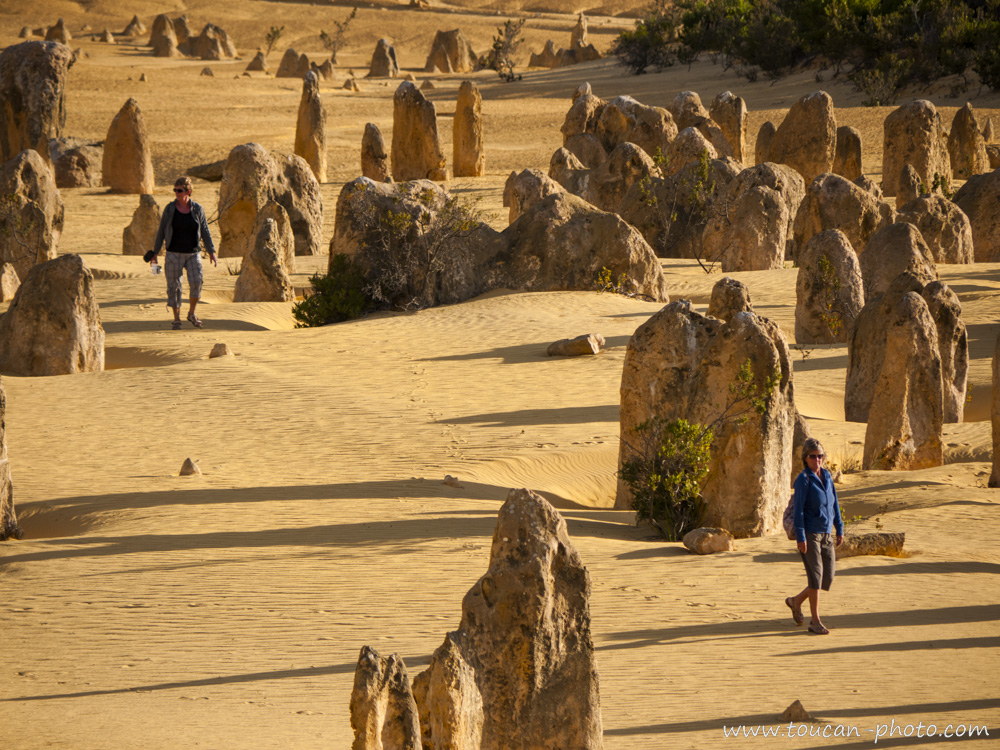 Walkers in the desert
Walkers in the desert
Location:
The Pinnacles Desert is located in the heart of Nambung National Park, Western Australia, 150km away from the north of Perth.
This national park, covering an area of nearly 20,000 hectares, was created in 1956 and attracts about 250,000 people per year.
It is named after the river that crosses it, Nambung, which means in aboriginal language : “twisted.”
This coastal park, in addition to its strange limestone menhirs ,contains white sand dunes, and beautiful forests.
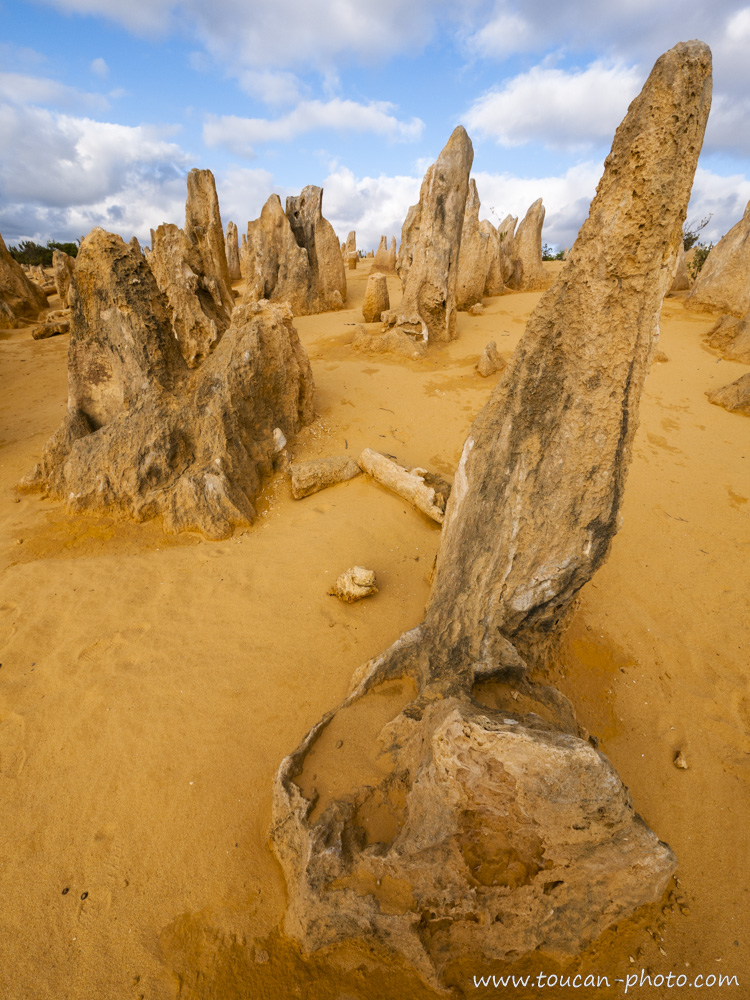 Pinnacles
Pinnacles
The story mixt with legends:
The discovery of the pinnacles desert by Westerners dates back to1650, when the Dutch explored this part of Western Australia.
They thought at first that these limestone pillars were the remains of an ancient city.
Indigenous Australians also had a grim vision of these standing stones as they thought they were fossilized ghosts.
According to an Aboriginal legend, some young men in the ancient times used to walk through a path in the desert to discreetly reach, a sacred place normally reserved for women. The gods, to punish them, buried them alive in the desert. In death, the young men asked forgiveness from the gods, brandishing their weapons through the sand, which would then be stick forever in the form of limestone blocks.
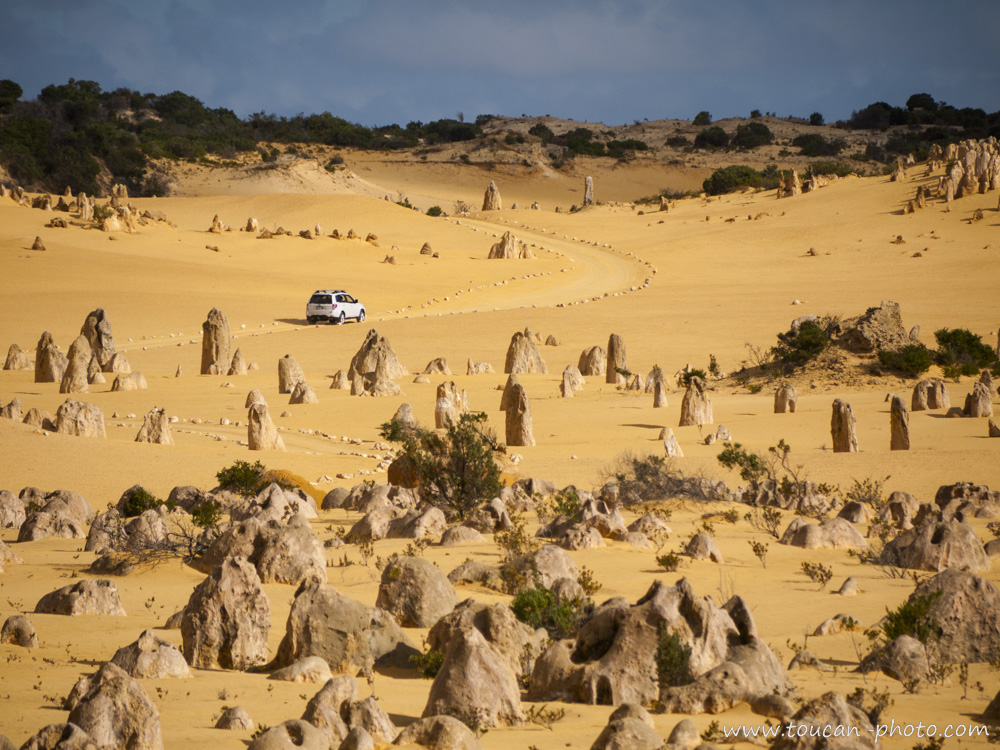 4WD on the desert track/p>
4WD on the desert track/p>
A surprising creation process:
A theory (still controversial) explains these curious formations.
For thousands of years, the wind and waves carried on the coastal sand desert thousands of tons of calcium carbonate, from the remains of marine shells.
The slightly acid winter rains allowed the calcium carbonate to sink into the ground.
Bushes used to grow in the region. Their roots are anchored in the soil layer, acting as pumps: they took the water but did not assimilate all the calcium carbonate that end up accumulating at the feet of the plants, transforming over time into solid limestone.
The vegetation disappeared from the area (probably because of a wildfire), but the solid limestone blocks remained buried under the sand.
This process of creation took place about 30,000 years ago, maybe more. Then the winds blew away part of the desert sand, revealing what remains of the limestone blocks.
It is also possible to observe on some pinnacles, pieces of fossilized roots, the remains of the bushes that allow the menhirs to become what we see today.
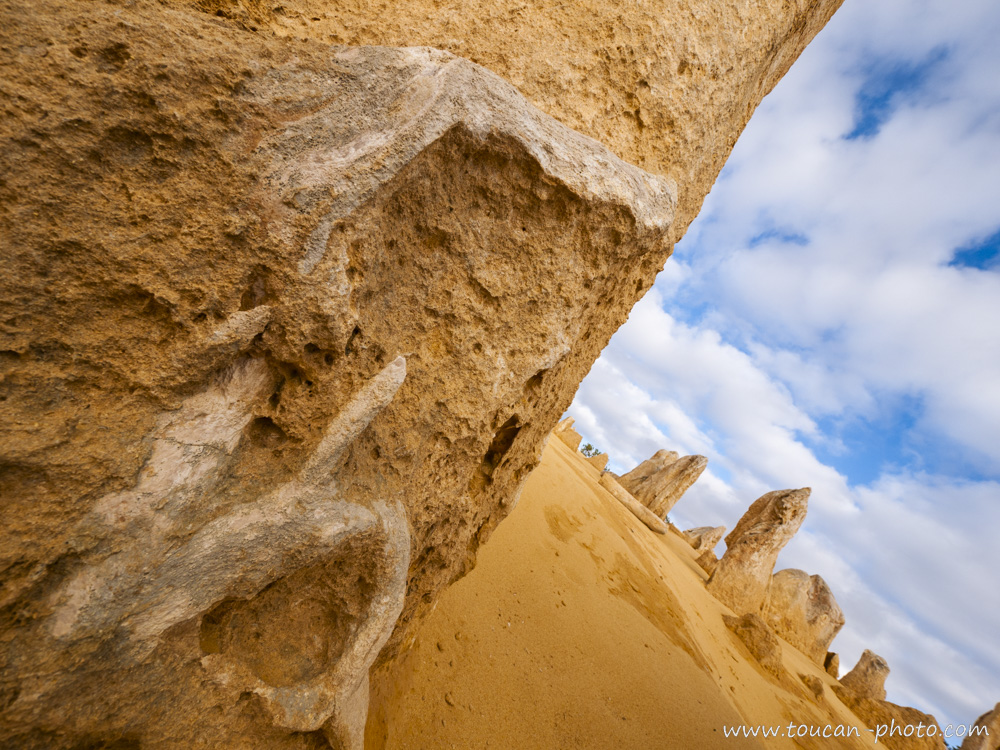 Fossilized root in a pinnacle
Fossilized root in a pinnacle
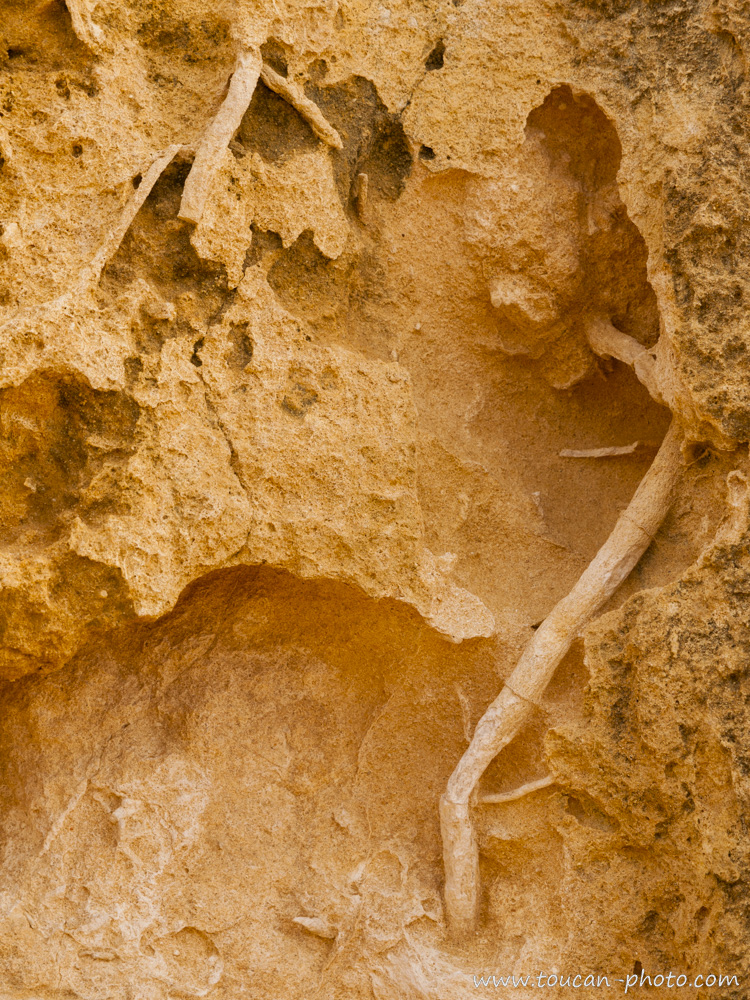 Root remains
Root remains
The Pinnacles hide and seek game:
The pinnacles emerged thanks to the movement of sand dunes that move under the action of the winds.
But the winds are changing and it is possible that some pinnacles disappear one day, buried again under the sand, while others, before hidden, emerge.
The result of excavations in the region even suggests that the Pinnacles desert, that emerged 6,000 years ago, completely disappeared 5000 years ago, only to reappear shortly before the arrival of Westerners.
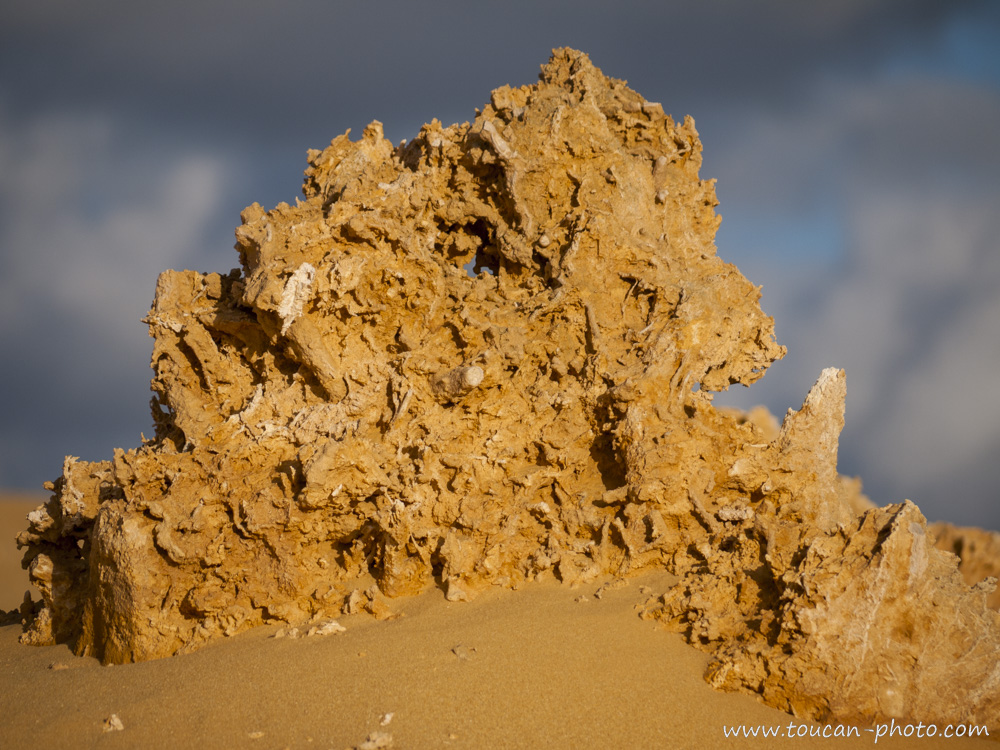 Top of a pinnacle piercing a sand dune.
Top of a pinnacle piercing a sand dune.
Is the sand starting to free this pinnacle or finish to bury it?
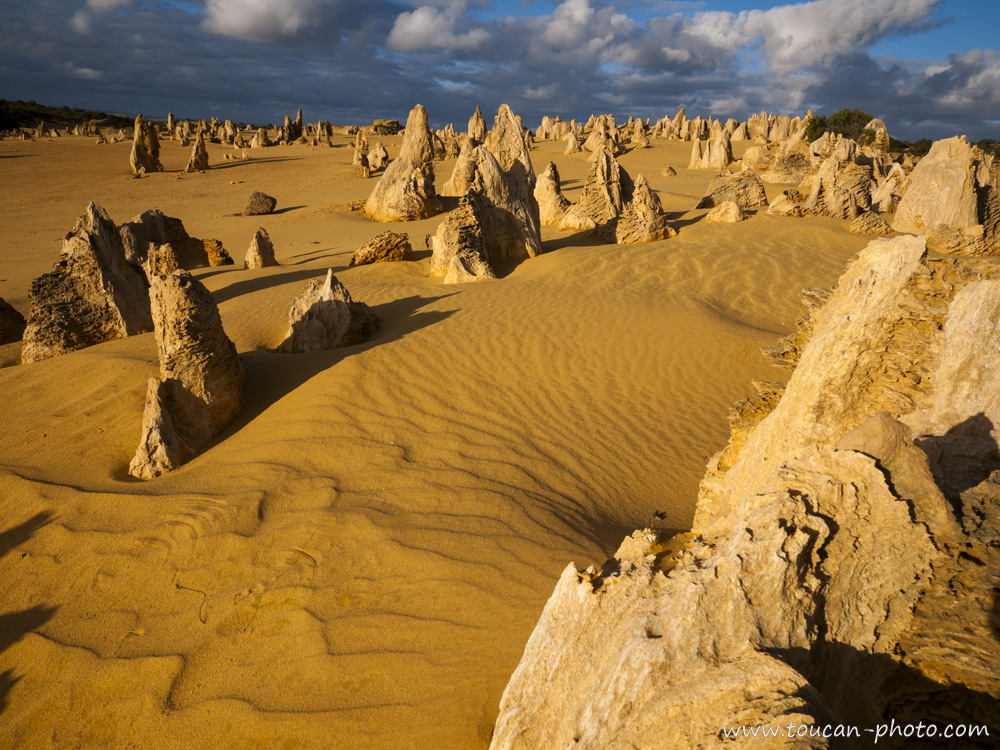 Dunes are moving because wind
Dunes are moving because wind
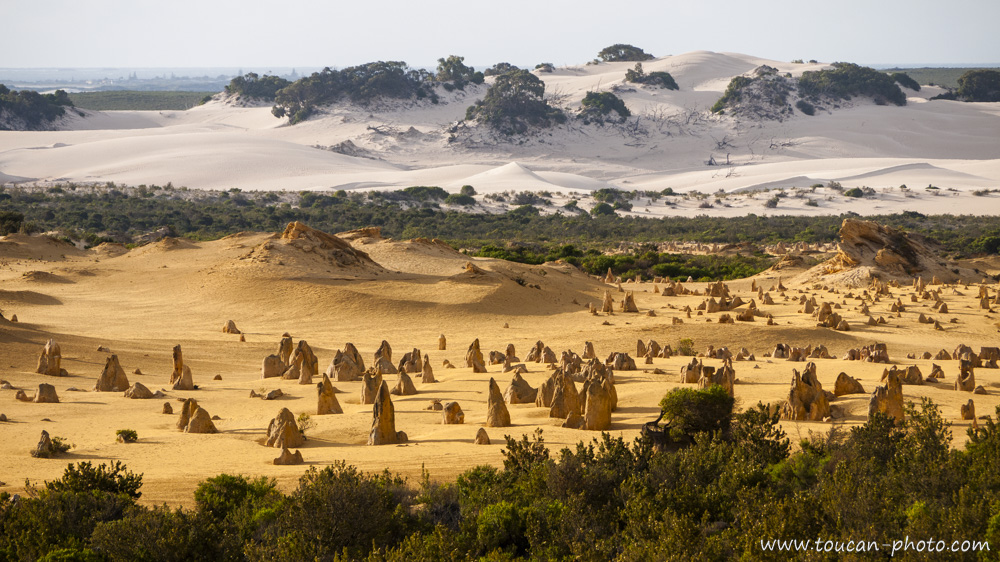 The Nambung National Park mixes Pinnacles, sand dunes and forests
The Nambung National Park mixes Pinnacles, sand dunes and forests
And now?
See more pictures from Australia
or
Read the paper about the australian Uluṟu-Kata-Tjuta area